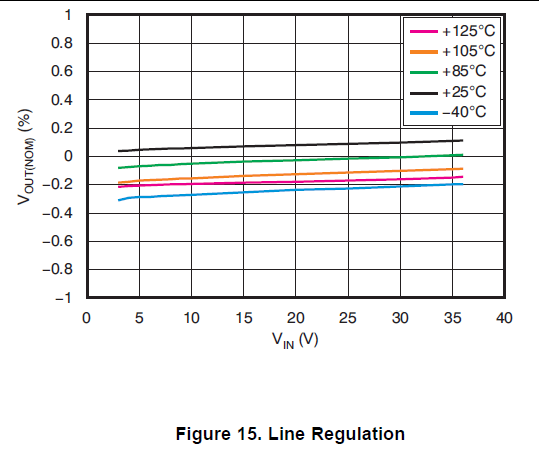Hi Sir,
In my TPS7A4901 test, I got some strange results.
As we all know, Load regulation of LDO(TPS7A4901), as well as Vout, is increasing along with Iout rising, and Line regulation of LDO(TPS7A4901), as well as Vout, is also increasing along with Vin rising. We can see from the datasheet of TPS7A4901 also.
But my test results are just on the opposite. Vout is decreasing along with Iout increasing or Vin increasing.
I have a guess, but I don't know it's right or wrong. As we can see, Vout is decreasing with the temperature rising, so I think the different Vin and Iout will cause different temperature, especially junction temperature. When Vin or Iout are high, power dissipation will be big, so the junction temperature will be high, this will cause Vout decrease, and this effect is much bigger than Vin or Iout increasing, so the Vout decrease a little.
I want to hear your opinion about this case.
Hope for your reply.
Thanks





